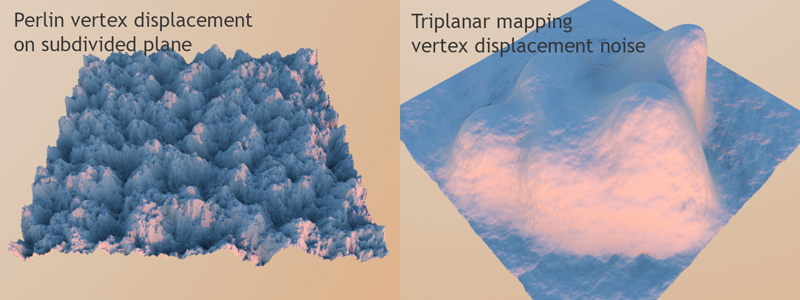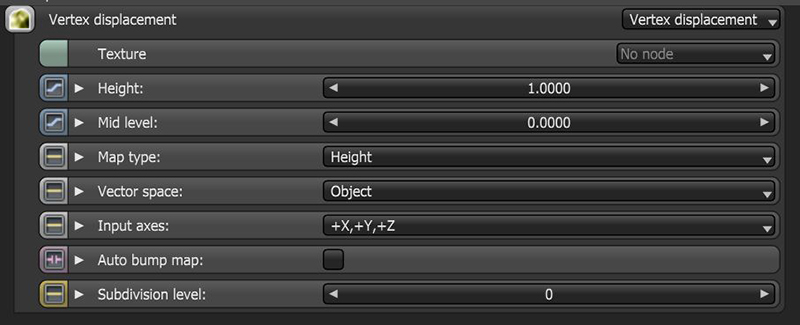Vertex Displacement
Vertex Displacement is a more robust displacement system that doesn't suffer from the same limitations as Texture Displacement. It works with all Textures and Projections, including Procedurals, OSL textures, and images. Height maps and Vector Displacement maps are also supported, and can be mixed using the Vertex Displacement mixer node.
|
|
Vertex Displacements
|
Figure 1: Perlin Vertex Displacement on a subdivided plane (left); Triplanar mapping Vertex Displacement noise (right)
Vertex Displacement subdivides the source Mesh based on the subdivision level. This can introduce higher mesh complexity that may increase render time and pre-processing per subdivided mesh.
|
|
Vertex Displacement Parameters
|
Figure 2: Vertex Displacement node parameters
Vertex Displacement Parameters
Texture - All texture types are supported, including Images, Procedurals, and OSL textures.
Height - The displacement height in meters.
Mid Level - The image value that corresponds to no displacement. The range is always normalized to [0,1]. Set this value to 0.5 for image textures that use 50% to represent no displacement.
Map Type - Choose between Height maps and Vector Displacement maps.
Vector Space - Valid when Map Type is set to Vector Displacement.
Input Axis - Provides information regarding how to interpret RGB data, this setting is only valid with the Vector map type.
Auto Bump Map - Generates an Automatic bump map to achieve fine details without requiring high subdivision levels. Only supports Height displacement maps.
Subdivision Level - The subdivision level applied to polygons using this material. Overrides the subdivision level set in Geometry preferences. Higher subdivision levels achieve greater displacement detail, but can also increase rendering and pre-processing times.
|
NOTE For Image textures, set the Gamma to 1.0 to avoid holes in the geometry. The vertices should be shared between adjacent faces.. |
|
|
Vector Map Type
|
Figure 3: An example of a Vector Displacement map, which works in tangent space





